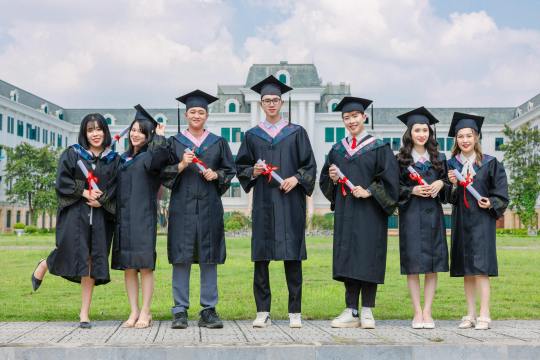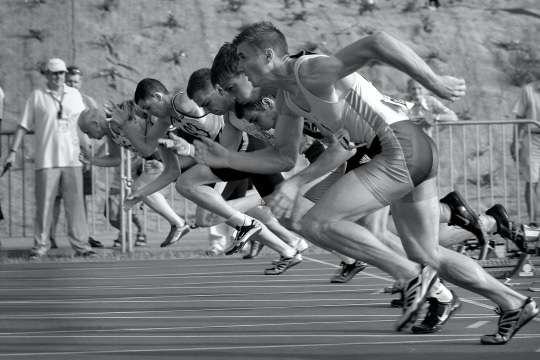Text
Omicron Delta Kappa - Advancing Leadership Skills and Careers

Omicron Delta Kappa (ODK) is an international leadership honor society based in Lexington, Virginia, at the historic Johnson Center for Leadership. Established in 1914 by a group of students, teachers, and administrators at Washington and Lee University, ODK honors and promotes leadership in academics, athletics, extracurricular activities, and other areas.
United by a commitment to service, character, and the betterment of universities, ODK's diverse membership collaborates across disciplines and backgrounds to model modern leadership. The society's core values of inclusion, integrity, collaboration, scholarship, and service guide its mission of developing principled leaders. ODK leaders build upon the fundamental pillars of campus life, including service to the community.
Behind ODK's respected national presence lies committed governance by its board of trustees and supporting committees. The board, comprising experienced volunteers dedicated to ODK's enduring value, charts the strategic direction of the society. Committees focused on diversity, development, and finance aid the board, ensuring ODK is positioned to develop leaders and serve its member universities. Trustees who have provided exemplary service receive the emeriti status honor, allowing them to continue contributing their wisdom and experience. Complementing the board of trustees is the student advisory board, which offers insight from the next generation of leaders.
ODK offers membership opportunities to develop leaders at all stages. Prospective members learn about the unique aspects of ODK and why it stands out compared to other honor societies. Initiated collegiate members gain networking and development opportunities through their local circles. Regardless of their role in academia or professional life, lifetime members receive ongoing leadership training and development and have opportunities to engage as volunteers.
To be considered for ODK membership, candidates must meet the class and academic eligibility needs. Undergraduate students must have reached sophomore, junior, or senior status by credits enrolled in a degree-granting program and maintain a class rank within the top 35 percent of their class, usually with a 3.5 GPA or higher. Graduate and professional student eligibility is determined by each circle, usually requiring a 3.6 GPA or higher. Once an individual is initiated into ODK as a college or university student and no longer enrolled at that institution, they become a lifetime member.
Members can apply for scholarships to support their continued education. Yearly, the organization provides over 45 scholarships of $1,000 to $5,000 to help students finance their graduate or professional studies. Members also receive internship opportunities, career services, and discounts on shopping and travel. Leadership development grants of approximately $500 are also available to help fund new programs proposed by campus chapters to bolster leadership skills among the student body.
Additionally, ODK boasts an array of high-impact national programs to equip members with career-ready skills. The annual National Leadership Conference brings together members to hear from inspirational speakers, attend skill-building workshops and participate in service activities. Other initiatives include the Stone Ethical Leadership Challenge, which funds local ethical leadership projects; the Charlie Life and Leadership Academy, which offers online courses in critical skills; and a National Day of Service to unite ODK circles in community work. Media offerings such as the Listen Up ODK Leaders podcast and admissions webinars further help members reach their academic and professional goals.
Generous philanthropists support ODK's various leadership and career development initiatives. Individuals can donate by giving to the Annual Fund to support primary needs such as career resources and member communications, giving to the Key Fund to advance its diversity, equity, and inclusion efforts, and donating to the Scholarship Fund. Planned giving also allows supporters to make a lasting impact through long-term gifts.
0 notes
Text
Qualifying for the Boston Marathon

Inspired by the Olympic Marathon, the Boston Marathon was established in 1897 and has occurred annually ever since. The first race spanned from Ashland, Massachusetts, to Boston, attracting 15 participants. In 1924, the organizers extended the course to align with the Olympic distance of 26.2 miles. Over the decades, runners from across the globe have flocked to participate in this marathon, solidifying its position as one of the most renowned races worldwide.
The marathon's route begins at Hopkinton, with runners passing through Ashland, Framingham, and Wellesley and mountainous areas like Newton as they make their way toward the finish line at Copley Square in Boston. The course features tough terrains and variable road conditions. It begins with a slight downhill slope, but the terrain becomes more demanding as runners approach the hills around Newton. One particularly challenging section for runners is Heartbreak Hill, known for its steep incline.
The Boston Marathon typically permits 20,000-38,000 total participants annually, depending on safety and other factors.
Official entry into the marathon requires attaining a qualifying time at the Boston Qualifiers. The qualification standards vary by gender and age group and are updated periodically. Cutoffs range from three hours for 18- to 34-year-old men to three-and-a-half hours for same-aged women. Older participants have slightly longer qualifying times, with some exceeding four hours. Depending on application volume, the marathon subtracts from the qualifying time a "cutoff time," which lowers the qualifying time. For the 2024 race, the "cutoff time" is 5:29, meaning the time a man between the ages of 18 and 34 would have had to run a 2:54:31 marathon or faster to be accepted into the race.
Registration for this marathon typically opens in September. Qualified runners register online by submitting their qualifying time details and paying a registration fee. For the 2024 race, the registration fee was $230 for residents of the United States; the fee is slightly higher for residents of other countries.
The Boston Athletic Association (BAA) prioritizes runners with the fastest qualification times, proceeding with the selection until they reach capacity. Runners have the option to purchase race insurance, which allows them to be refunded the registration fee if they cannot participate due to unforeseen circumstances. Once registration closes, the BAA verifies that all submitted times meet the criteria, makes a final decision, and sends out acceptance notices to the selected runners.
Besides achieving a qualifying time, runners can enter the Boston Marathon via charity qualification. Runners who take this option can receive entry into the marathon by committing to raising a specified amount for a chosen charity. Each year, at least 30 charities receive guaranteed entry spots for fundraisers. In 2019, charity entrants reportedly raised a record $38.7 million.
Given its major marathon status internationally, the Boston Marathon offers substantial cash prizes for top finishers. In 2023, the men's and women's overall winners each received $150,000, with second place taking home $75,000. Top finishers in the masters division (а category designed for participants over 40) won $5,000, while wheelchair racers received $25,000 for first place. There was also prize money awarded across several paralympic categories.
0 notes
Text
A History of the Boston Marathon

The Boston Marathon is not only the oldest and most prestigious marathon in the world. Every year, runners from across the globe compete for the chance to qualify for this 26.2-mile trek through eight Massachusetts cities. Roughly 30,000 people receive the chance to run the course during each year’s race.
However, the Boston Marathon does more than attract some of the best runners in the world. The event regularly draws around 500,000 spectators and representatives of over 250 media outlets, making it the world’s second largest sporting event held in a single day based on media coverage.
The Boston Marathon has a history that spans more than 120 years, starting with its humble beginnings in 1897. The idea to host a marathon in Boston came after U.S. Olympic Team Manager and Boston Athletic Association (BAA) member John Graham sought to bring the spirit of the Olympic Games to the city. Using the 1896 Olympic marathon as his inspiration, Graham devised a 24.5-mile route alongside local businessman Herbert H. Holton that ran from Metcalf’s Mill in Ashland to Boston’s Irvington Oval.
The first Boston Marathon, then dubbed the “American Marathon,” took place on April 19, 1897, as part of the local Patriots’ Day celebrations. Only 15 runners participated in the inaugural event, 10 of whom finished the race. New Yorker John J. McDermott was the first person to win the marathon with a time of 2:55:10. The following year, a Nova Scotia native took first place, setting the groundwork for the marathon’s future success as a draw for international participants.
Subsequent years saw many changes to the Boston Marathon. During World War I, the 1918 race was replaced by a military relay race. In 1924, organizers lengthened the course to the Olympic standard of 26 miles, which meant that the race would start in Hopkinton from that year onward. Until 1968, every Boston Marathon took place on Patriot’s Day, April 19, until observation of the holiday changed to the third Monday of April. Ever since, the event has taken place on that same Monday.
In 1972, the Boston Marathon began allowing women to participate. One woman, Roberta “Bobbi” Gibb secretly ran the 1966 marathon after sneaking onto the course without a number. A second woman, Kathrine Switzer, officially signed up for the 1967 Boston Marathon under a shortened version of her name to hide her gender and finished the race despite interference from officials. Eight women registered for the 1972 race and Nina Kuscsik became the first female runner to officially win.
In more recent years, the Boston Marathon has only continued to surge in popularity, with the 100th event drawing nearly 37,000 starters. The marathon endured its first cancellation in over 120 years due to the COVID-19 pandemic in 2020. The following year, the event was moved from April to October for the first time ever.
Despite a challenging and unique few years, the Boston Marathon has remained as beloved as ever. The 2024 race received over 33,000 qualifier applications for the event that will mark 100 years since the starting line of the race was moved to Hopkinton.
1 note
·
View note